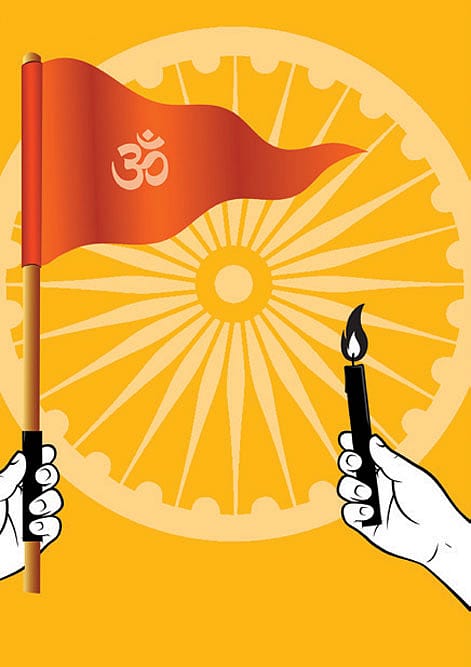The Great Indian Reawakening

THERE IS A NEW awakening in India if you can call it that. There's a sense of identity that is increasingly veering away from nationalism to an even more sharply defined cultural and religious identity. I will leave it to the historians and anthropologists to figure out the reasons why, but from a common man's perspective, it is an interesting time to live in India. When we were growing up (and I am 61), religion was private and culture was public. Culture was the confluence of the arts primarily and perhaps a little bit of linguistic identity was thrown in. We celebrated festivals within the community or the family and there was no pomp and show: it was almost always understated. I remember growing up in Calcutta when even the Pujas were primarily celebrated at people's homes with home deities being installed and from the home itself taken for immersion. The affair was religious but always had a sprinkling of culture. There was always someone from the family who would put up a performance: but yet again, very private. Parents never insisted that children follow any rituals, which is why we celebrated even religious festivals shorn of both our religion and the community we were part of.
Then it began changing in almost every way. The pandals of the Pujas became bigger and commerce quietly took over. You needed to dress up and you needed to celebrate every day of the Pujas if you were in Kolkata. For those in the north, Karva Chauth became a kitty party event where women would gather at one friend's home and then spend the entire day fasting for the longevity of their spouses. Homemade gifts were replaced by fancy handbags, and so on. Western India quietly witnessed another change: Ganesh Chaturthi was not only restricted to a home celebration but also became an event that friends would partake in. Consumerism kicked in as it should. The religious element was however still kept distinct from the cultural one. Gujarat started witnessing the Garba festival with headline acts from famous singers and film stars who did not shy away either from making appearances for money and so on.
2026 New Year Issue
Essays by Shashi Tharoor, Sumana Roy, Ram Madhav, Swapan Dasgupta, Carlo Pizzati, Manjari Chaturvedi, TCA Raghavan, Vinita Dawra Nangia, Rami Niranjan Desai, Shylashri Shankar, Roderick Matthews, Suvir Saran
Christmas in Calcutta was all about the Midnight Mass at the St Paul's Cathedral followed by a brunch the next day with turkey, etc, at someone's home: that too began changing when clubs in Kolkata started with their Christmas Eve parties followed by a whole day of food and drink. The fervour of mass and celebrating with Christian friends was replaced by everyone hanging out, irrespective of their faith.
But that was the idiom of our existence: be it Holi or Diwali, or for that matter, Eid or Christmas, there was always a clear distinction between religion and culture. It is true that the border between private religious ceremonies and a more public one had melted, but you still had culture not doing the crossover as it is doing today. And today, it's the other way round. We have allowed (or accepted) that religion can and will form the bedrock of culture too.
At a recent puja, Radhanath Swami, one of the world's foremost gurus, told me something that was both insightful and brilliantly perspective-laden. He said, "Culture will be centred and is anchored in gratitude to God": I agree with this wise thought only because I am seeing this all around. Last month, the Nita Mukesh Ambani Cultural Centre presented 'Bhakti: The Art of Krishna', which was an immersive new visual art exhibit, and this drew thousands of people. And I see greater merit in this because, hopefully, these events will not only help us rekindle the legacy we are part of but will also reawaken us to the values that we need to bind people and nations.
And uniquely, this revival of an inflection point between religion and culture will augur well both to sensitise us and also treasure our heritage. Remember, there was a time when famed singers began their careers singing in temples or mosques. The Gurbani that reverberated at the Golden Temple, or for that matter, those who sang while climbing up to the shrine at Vaishno Devi were both inspiring and evocative.
Nations need to re-examine this: culture blunts the aggression and the fierce belongingness of religion at times but when both culture and religion are tempered and tamed by one another, we have a joyous state of affairs, which is what humanity today must strive for.
